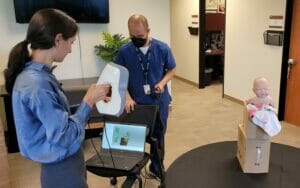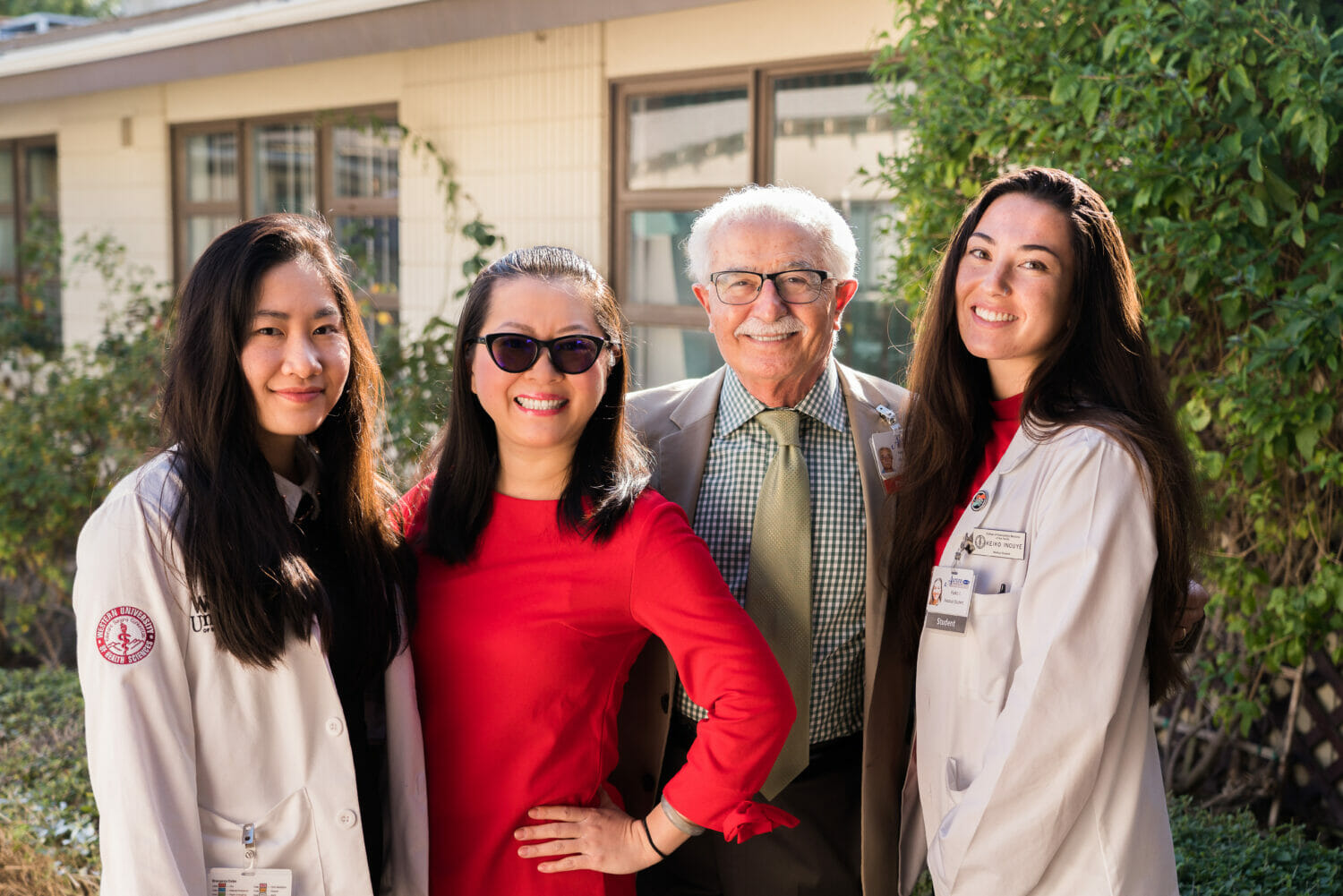First Breaths: 3D-Printing Preemie CPAP Apparatuses
By Tracy A. Mendolia-Moore
The Center for Excellence in Teaching & Learning (CETL) at Western University of Health Sciences is partnering with students from the iSquad to develop CPAP mask prototypes for preterm neonates.
CETL Educational 3D Visualization Specialist Gary Wisser instructed the iSquad first-year medical students in scanning the tiny facial features of infant manikins, which will be used to generate an accurate 3D rendering.
“It’s always great to be able to create prototypes with students who are trying to develop solutions to problems they discover in the real world,” Wisser said.

Continuous positive airway pressure (CPAP) therapy with selective surfactant administration is the current preferred strategy initiated in preterm neonates who are at risk for neonatal respiratory distress. However, nasal trauma is a frequent complication in very low birthweight preterm infants using CPAP masks with nasal prongs for extended periods. While 3D-printed CPAP masks is already an emerging field in pediatric medicine, research assessing the application and protocol for integrating 3D-printed CPAP masks into preterm neonatal care is limited. The iSquad students are researching the development of customized CPAP masks for preterm neonates through the use of 3D printing technology.
“In some infants of low birth weight, CPAP therapy is delivered using soft, neonatal-sized nasal masks suitable for direct-skin and facial contact with newborns. In this population, poorly fitted nasal masks can cause difficulties and irritation over prolonged periods of time. It is the hope of some doctors and researchers that 3D scanning and printing technologies will help to improve the options for children, and especially for young infants,” said COMP student Natasha Holden.
Students were invited to the CETL offices to begin developing their digital 3D model by scanning infant manikins. From the student scans a 3D digital model was rendered, which will be used in developing the digital design prototype. When the design is complete, the CPAP prototype will be printed using a UV-cured flexible resin, helping to create a solid connection, thereby minimizing air leakage.
“If I can help the student turn a problem into a solution at such an early stage in their career, I think they can look at hurdles as opportunities. Now, 3D scanning, printing, and visualizations can be added to the toolkits they’ll use to serve future patients,” Wisser said.
“With our work, we are showing how feasible, cost-effective, and scalable 3D printing is to provide personalized solutions to neonatology,” said COMP student Jane Park. “Hopefully, by establishing a manageable protocol, our work can be applied to demographics such as pediatrics and adult sleep medicine, where CPAP mask is standard treatment, but difficult to achieve compliance. With medicine becoming more personalized, 3D printing can be the future of medicine.”
If you’re interested in partnering with CETL to create an innovative 3D teaching or learning project, send an email to cetl@westernu.edu or visit us online at https://cetl.westernu.edu/.
